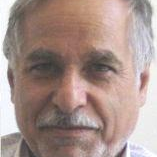
A.V. Kamyad
Work place: Department of Applied Mathematics, Ferdowsi University of Mashhad, Mashhad, Iran
E-mail: Avkamyad@yahoo.com
Website:
Research Interests: Computer systems and computational processes, Operating Systems, Systems Architecture, Analysis of Algorithms, Theory of Computation, Models of Computation
Biography
Ali Vahidian Kamyad, Ph.D. in control and optimization from Leeds University, England. He is full professor at the faculty of mathematical sciences, Ferdowsi University of Mashhad, Iran and his research interests are mainly on optimal control of distributed parameter systems, applications of fuzzy theory, nonsmooth analysis and application of control in medicine.
Author Articles
Solving a Class of Non-Smooth Optimal Control Problems
By M. H. Noori Skandari H. R. Erfanian A.V. Kamyad M. H. Farahi
DOI: https://doi.org/10.5815/ijisa.2013.07.03, Pub. Date: 8 Jun. 2013
In this paper, we first propose a new generalized derivative for non-smooth functions and then we utilize this generalized derivative to convert a class of non-smooth optimal control problem to the corresponding smooth form. In the next step, we apply the discretization method to approximate the obtained smooth problem to the nonlinear programming problem. Finally, by solving the last problem, we obtain an approximate optimal solution for main problem.
[...] Read more.A New Approach for the Generalized First Derivative and Extension It to the Generalized Second Derivative of Nonsmooth Functions
By Hamid Reza Erfanian M. H. Noori Skandari A.V. Kamyad
DOI: https://doi.org/10.5815/ijisa.2013.04.10, Pub. Date: 8 Mar. 2013
In this paper, first derivative of smooth function is defined by the optimal solution of a special optimization problem. In the next step, by using this optimization problem for nonsmooth function, we obtain an approximation for first derivative of nonsmooth function which it is called generalized first derivative. We then extend it to define generalized second derivative for nonsmooth function. Finally, we show the efficiency of our approach by evaluating derivative and generalized first and second derivative of some smooth and nonsmooth functions, respectively.
[...] Read more.Other Articles
Subscribe to receive issue release notifications and newsletters from MECS Press journals